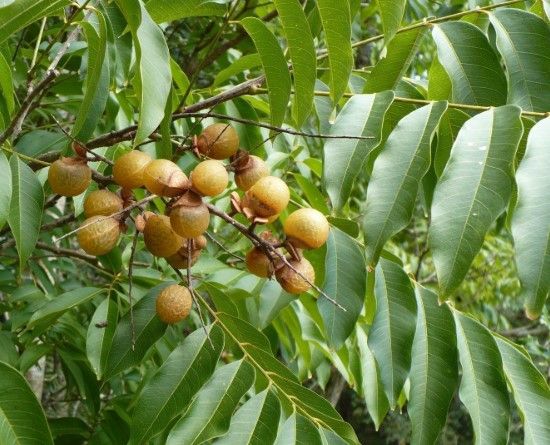Soapnut, (Reetha or Ritha)
Reetha tree, Washnut tree, Also called Indian soapberry, this small tree produces round, hard-shelled fruits that are rich in natural saponins—soapy compounds that lather in water. For centuries across India, Sri Lanka, and Southeast Asia, these nuts have been used as a zero-waste alternative to shampoo, laundry powder, and dish soap. Fast-growing and drought-tolerant once established, it also offers shade and is sometimes used in agroforestry systems to repel pests. Can be grown in pots when young, but prefers space to mature.
Features
– Ideal prune height: 3–5 m
– pH range: 6.5–8.5
– Sun preference: Full sun
– Minimum pot size by year 5: 45 L
– Time to fruit: 5–8 years
– Harvest period: Late summer to early autumn
– Notable traits: Used as a soap substitute; fruits stored dry last for years
Plant in well-draining soil with compost or aged manure. Likes heat and resents wet feet, so raise the bed or use mounds in clay. Water well in summer, but reduce during winter to prevent rot. Mulch heavily and protect young plants from frost until hardened.
Ideal for those looking to reduce chemicals at home or grow their own sustainable cleaning products. Hardy, productive, and with cultural history behind it, soapnut is a unique all-rounder worth having.
Great income tree, as the fruit is hot seller in Australia.
Keywords: soapnut, Sapindus mukorossi, Indian soapberry, natural soap tree, fruit tree Perth, zero waste tree, grow soap substitute Australia.
